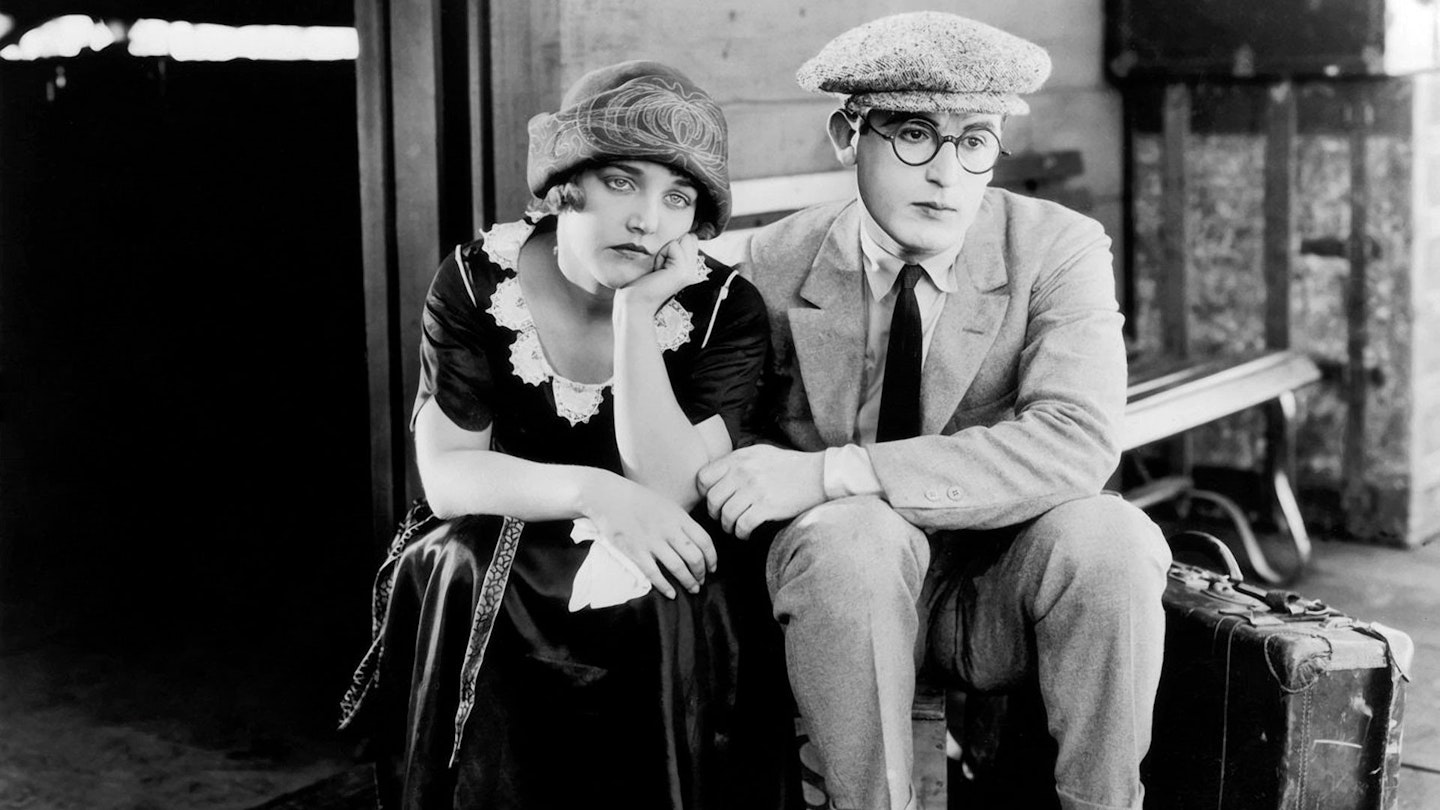Harold Lloyd was inspired to make the fourth of his five thrill pictures after witnessing a crowd's reaction to Human Spider Bill Strother's attempt to scale a building in downtown Los Angeles. However, the action was as much rooted in an innocuous deception as the storyline itself.
The final quarter of Safety Last was devoted to the celebrated stunt. But Lloyd also invested considerable care in the character comedy that made the climax so gripping. As ever, he played a brash, resourceful go-getter whose personality reflected the `can do' attitude of the Jazz Age. However, Lloyd remains very much a country boy here and it's love and friendship rather than social or economic aggrandisement that prompts him to take on the ascent after Limpy Bill is distracted by the cops.
The case of mistaken identity that necessitates Lloyd's heroism was something of a contrivance. But none more so than the plethora of obstacles that made the climb so difficult. Pigeons, ropes, a mouse, a swinging window, a net, a flagpole, a weather vane, a painters' platform, a flash gun and a clock face all conspire to hinder Lloyd's progress and each incident inspires amused apprehension rather than the guffaws usually elicited by such silent pratfalls.
Lloyd always insisted that he performed his daredevil pantomime at the heights seen on the screen and so he did. But it was Bill Strother who appeared in the long shots, while Lloyd did the medium and close-up work on reconstructions that were precisely positioned on rooftops commensurate with the different stages of the climb. It was still a perilous enterprise, but Lloyd always had mattresses some 20 feet below him.
However, the authenticity of the stunt is largely immaterial. The illusion was all that mattered and directors Fred Newmeyer and Sam Taylor, along with their four cameramen, made supremely inventive (not to say ingenious) use of angle and space to pull this off spectacularly. Contemporary audiences were undeniably impressed and a feature that cost $120,963 raked in $1,588,545.
